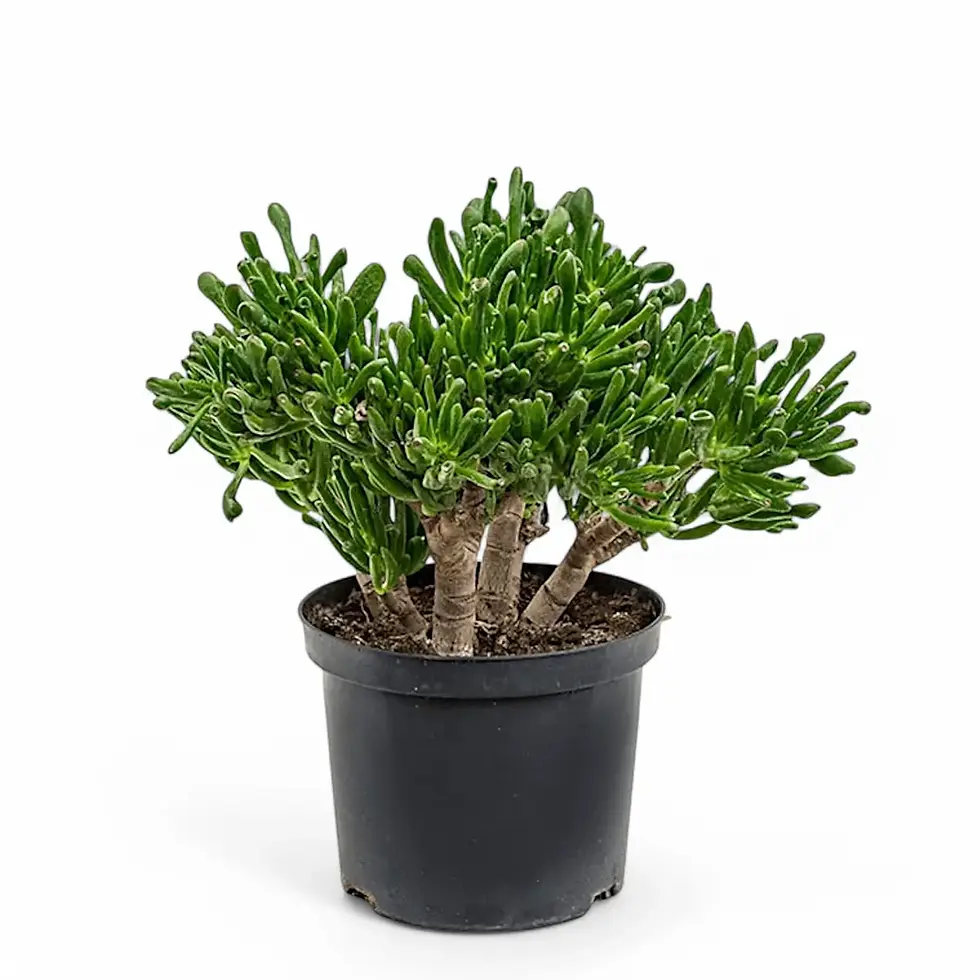Citrus maxima - Complete Care Guide & Growing Tips
Citrus maxima, also known as pomelo, is the largest citrus fruit, valued for its sweet-tart flavor and impressive size. Native to Southeast Asia, pomelo plays a significant role in traditional festivities and culinary practices. Its thick rind protects juicy segments that are enjoyed fresh or used in salads, desserts, and savory dishes. With the right care, this citrus tree can thrive indoors, offering both an ornamental appeal and the joy of homegrown fruit.
Distinctive Features of Citrus maxima
- Size & Appearance: Indoors, pomelo trees can reach up to 4 meters with irregular branches and a slightly twisted trunk. The large, leathery leaves are dark green with a subtle sheen. The fruit, either pear-shaped or round, has a thick greenish-yellow rind, while the flesh varies from pale yellow to pink, depending on the variety.
- Flowers & Fruit: Citrus maxima produces fragrant yellow-white flowers, attracting pollinators such as butterflies and bees. Pomelo fruit is highly valued for its juicy, slightly tangy taste, commonly eaten fresh or incorporated into culinary dishes, from fruit salads to Thai-style pomelo shrimp salad.
Citrus maxima: Essential Growth & Habitat Information
- Native Climate: Pomelo thrives in tropical and subtropical climates with temperatures between 20°C and 30°C and high humidity.
- Indoor Growth Potential: Citrus maxima can reach up to 4 meters in height with a spread of 2 to 3 meters.
- Growth Rate: Moderate, with steady development over several years.
- Growth Habit: Upright with a dense, leafy canopy.
- Toxicity: Avoid contact with pets – can cause digestive disturbances if consumed.
Citrus maxima Growth Stages:
- Germination: Seeds take 2-4 weeks to sprout in warm, moist soil.
- Seedling Stage: True leaves emerge within weeks, requiring consistent care.
- Vegetative Growth: Focuses on branch and leaf development for the first few years, benefiting from regular pruning and fertilization.
- Flowering & Fruiting: Pomelo trees typically start flowering and fruiting after 5-8 years, with flowers needing pollination.
How to Care for Citrus maxima:
- Placement: Choose a bright, warm location, away from cold drafts and direct heat sources.
- Light: Requires 6-8 hours of direct sunlight daily. If natural light is insufficient, supplement with full-spectrum grow lights.
- Watering: Keep soil moderately moist. Overwatering can cause root rot.
- Humidity: Prefers moderate humidity levels (50-60%). Use a humidifier if needed.
- Temperature: Thrives in 20°C to 30°C. Avoid temperatures below 10°C to prevent stress.
- Soil: Requires deep, fertile, well-draining loamy soil. A citrus-specific mix enriched with perlite or sand ensures optimal drainage.
- Repotting & Pot Choice: Repot every 2-3 years in a slightly larger pot with drainage holes.
- Fertilizing: Feed with a balanced citrus fertilizer every 4-6 weeks. Reduce feeding in autumn and winter.
- Propagation: From seeds or semi-hardwood cuttings for best results.
- Hydroponics & Semi-Hydroponics: Thrives in semi-hydroponic setups with aerated nutrient solutions.
- Pruning: Enhance airflow, remove inward-growing branches, and trim to maintain a manageable indoor height.
Citrus maxima: Common Issues & How to Fix Them
- Pests: Spider mites, aphids, mealybugs, and whiteflies may infest leaves. Treat with neem oil or insecticidal soap.
- Root Rot: Prevent by ensuring good drainage and avoiding overwatering.
- Leaf Discoloration: Yellowing leaves may indicate nutrient deficiencies. Brown leaf tips suggest low humidity.
- Fungal Issues: Powdery mildew and citrus scab can occur in humid conditions. Improve air circulation and apply sulfur-based fungicides if needed.
- Temperature Stress: Gradually acclimate the plant to prevent shock when transitioning indoors for winter.
Additional Considerations for Citrus maxima
Understanding the native conditions of Citrus maxima helps in mimicking its ideal environment at home. Providing sufficient light, warmth, and humidity ensures a thriving tree with healthy fruit production.
Etymology
The name "pomelo" derives from the Dutch term "pompelmoes", meaning large citrus fruit. The species name "Citrus maxima" translates to "largest citrus," highlighting its impressive size. The fruit was introduced to the West Indies by Captain Shaddock, leading to the alternative name "Shaddock."
Citrus maxima: Frequently Asked Questions
- How long does it take for a pomelo tree to bear fruit? Typically 5-8 years, depending on optimal growing conditions.
- Can Citrus maxima be grown indoors year-round? Yes, with adequate light, warmth, and humidity, it can be cultivated indoors throughout the year.
- What are the best culinary uses for pomelo? Pomelo is delicious fresh but is also widely used in fruit salads, desserts, Thai-inspired dishes, and tangy vinaigrettes.
Order Your Citrus maxima Today!
Transform your space with a lush, fruit-bearing pomelo tree. Order now and start growing your own citrus indoors!
Citrus maxima (Pomelo)
Citrus maxima - Pomelo is ca. 85 cm tall and comes in a 22 cm pot.































